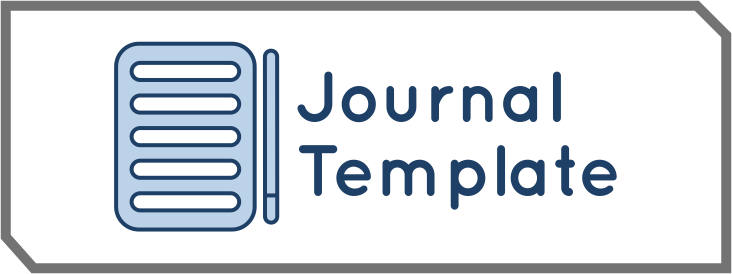Digitalisasi Sekolah Sebagai Pendorong Pembelajaran Efektif dan Kreatif di SMA Negeri 1 Semarang
DOI:
https://doi.org/10.55606/khatulistiwa.v5i1.6606Keywords:
digitalization, education, learning effectiveness, creativity, technology in educationAbstract
Digitalization in education is a pressing issue in Indonesia, especially in the context of the rapid technological advancements driven by the 4.0 industrial revolution. This research focuses on the impact of digitalization on learning effectiveness and student creativity at SMA Negeri 1 Semarang. The primary objective is to assess how digital tools such as Learning Management Systems (LMS) influence the quality of teaching and foster creativity among students. Using a qualitative descriptive approach, data were collected through interviews, observations, and document studies. The findings indicate that the implementation of LMS at SMA Negeri 1 Semarang has positively affected learning by offering more flexible access to learning materials and enhancing student engagement. However, challenges related to teacher training and unequal access to technology for students remain significant barriers. The research suggests that for digitalization to be fully effective, continuous professional development for educators and equal access to digital devices for students are essential. The implications of this study emphasize the need for supportive policies and infrastructures to optimize the benefits of digital education.
References
Arikunto, S. (2010). Prosedur penelitian: Suatu pendekatan praktek. Jakarta: Rineka Cipta.
Gunawan, A. (2022). Urgensi manajemen pendidikan dalam menghadapi era digitalisasi. Jurnal Ilmiah Ilmu Pendidikan, 9(2), 67–73.
Kemendikbud. (2019). Digitalisasi sekolah: Mempercepat perluasan akses pendidikan berkualitas. Majalah Jendela, XXXIX.
Kemendikbudristek. (2024). Digitalisasi pendidikan: Memperluas akses pendidikan dan kualitas pendidikan. Kementerian Pendidikan dan Kebudayaan Republik Indonesia. Retrieved from https://kemdikbud.go.id
Kementerian Pendidikan dan Kebudayaan Republik Indonesia. (2019). Peraturan Menteri Pendidikan dan Kebudayaan Nomor 31 Tahun 2019 tentang Petunjuk Teknis Bantuan Operasional Sekolah Afirmasi dan Bantuan Operasional Sekolah Kinerja. Retrieved from https://peraturan.bpk.go.id/Details/137740/permendikbud-no-31-tahun-2019
Learning: Jurnal Inovasi Penelitian Pendidikan dan Pembelajaran. (2024). Peran digitalisasi sekolah terhadap mutu pendidikan, 4(2), 288–295.
Mishra, P., & Koehler, M. J. (2006). Technological pedagogical content knowledge: A framework for teacher knowledge. Teachers College Record, 108(6), 1017–1054. https://doi.org/10.1111/j.1467-9620.2006.00684.x
Moersch, C. (1995). Levels of technology implementation (LoTI): A framework for measuring classroom technology use. Learning and Leading with Technology, 23(3), 40–42. Retrieved from https://www.iste.org/learning-and-leading/article/levels-technology-implementation-loti-framework-measuring-classroom-technology-use
Pradana, S. A., & Pratama, M. (2022). Kesenjangan digital dalam dunia pendidikan masa kini dan masa yang akan datang (Studi Kasus di SMP N 35 Medan). Jurnal Bintang Pendidikan Indonesia (JUBPI), 2(3), 15–24. https://doi.org/10.55606/jubpi.v2i3.3003
Puentedura, R. R. (2016). The SAMR model: Technological integration into higher education. Retrieved from https://hippasus.com/rrpweblog/archives/2016/07/SAMRModel_TechnologicalIntegrationIntoHigherEducation.pdf
Sembiring, R., & Kona, D. (2024). Pengaruh pembelajaran berbasis teknologi terhadap motivasi dan hasil belajar siswa di SMP Negeri 35 Medan. Jurnal Pendidikan Teknologi, 12(3), 45–56. https://doi.org/10.1234/jpt.v12i3.4567
Sinambela, S. M., Lumbantobing, J. N. Y., Saragih, M. D., Mangunsong, A. F., Nisa, C., Simanjuntak, J. P., & Jamaludin. (2024). Kesenjangan digital dalam dunia pendidikan masa kini dan masa yang akan datang (Studi kasus di SMP N 35 Medan). Jurnal Bintang Pendidikan Indonesia (JUBPI), 2(3), 15–24. https://doi.org/10.55606/jubpi.v2i3.3003
Sugiyono. (2018). Metode penelitian kuantitatif, kualitatif, dan R&D (Edisi ke-26). Alfabeta.
Sutarso, W., & Haryati, T. (2024). Peran digitalisasi sekolah terhadap mutu pendidikan. Learning: Jurnal Inovasi Penelitian Pendidikan dan Pembelajaran, 4(2), 288–295.
Venkatesh, V., Thong, J. Y. L., & Xu, X. (2012). Consumer acceptance and use of information technology: Extending the unified theory of acceptance and use of technology. MIS Quarterly, 36(1), 157–178. https://doi.org/10.2307/41410412
Yamin, M., Supiana, S., & Zaqiah, Q. Y. (2022). Penggunaan literasi digital di Madrasah Aliyah Negeri. Edukatif: Jurnal Ilmu Pendidikan, 4(4), 6366–6377.
Downloads
Published
How to Cite
Issue
Section
License
Copyright (c) 2025 Khatulistiwa: Jurnal Pendidikan dan Sosial Humaniora

This work is licensed under a Creative Commons Attribution-ShareAlike 4.0 International License.








